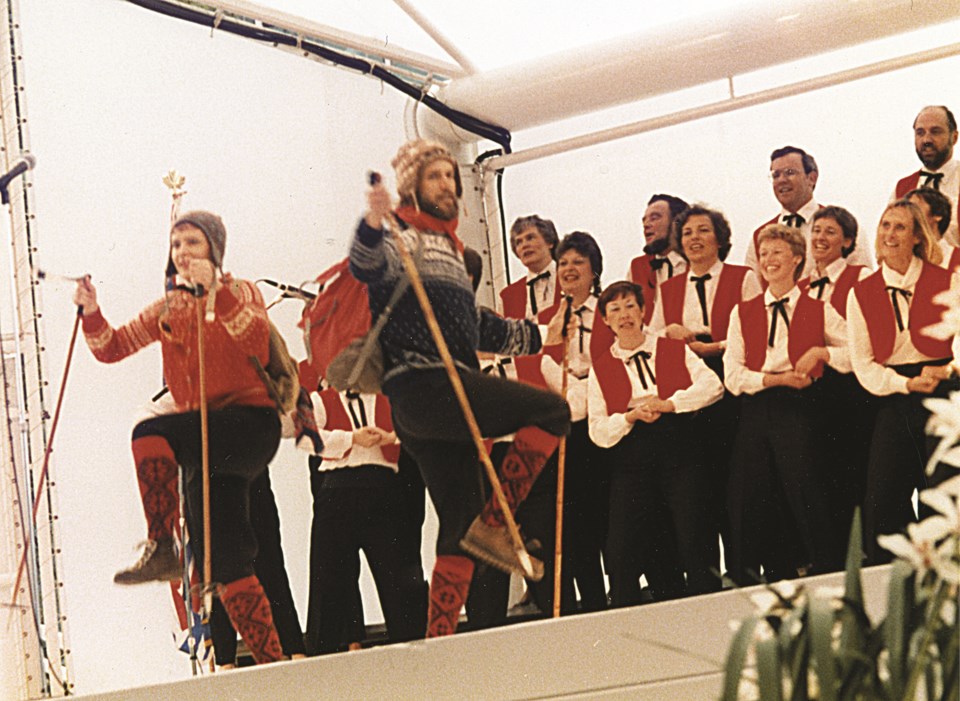Expo 86 is widely credited as turning Vancouver from a sleepy regional city into the international destination it is today, while also increasing awareness of surrounding regions of B.C.—including Whistler and Victoria.
In 1986, Vancouver threw a party and the world accepted the invite. The 1986 World Exposition on Transportation and Communication, usually just called Expo 86, ran from May to mid-October and attracted more than 22 million attendees, far exceeding original estimates.
Many hopes for the region were pinned on Expo, which also far exceeded its initial budget. Full-colour brochures were distributed extensively to encourage Expo visitors to travel to Whistler. Ahead of the opening of Expo on May 3, 1986, the brochures were as “ubiquitous as the Gideon bible in Lower Mainland hotels and information centres this summer,” according to the Whistler Question.
World Expo is a long-running exhibition designed to highlight global achievements. Over 40 nations from around the world descended on Vancouver with their pavilions centred around the theme of transportation and communication.
Opening week of Expo saw over 55,000 people join the celebration in Vancouver, including hundreds of Whistlerites, and special guests such as the Prince and Princess of Wales, Charles and Diana.
In that first week, a group of talented locals, including the Whistler Singers, performed Whistler–Let the Spirit Grow, a song, dance and comedy production created for Expo and performed in the BC Pavilion. They had previously performed the witty, well-orchestrated theatre piece for the community at Rainbow Theatre in the lead-up to Expo, finishing with a standing ovation.
Despite the visitors flocking to Vancouver, Whistler did not initially receive the influx of guests it had anticipated. At the beginning of July, two months into Expo, visitor numbers were down for Whistler compared to May and June 1985. At this time, summers were quiet, and this was not the world-stage premiere that Whistler had been hoping for. Additionally, visitors who booked accommodation in Whistler expecting to commute to Expo daily were often met with poor conditions, wiping their brows as they arrived after the long and windy drive. However, the nice weather eventually arrived and visitation picked up, with that August and September becoming the busiest summer months Whistler had yet seen in its short history.
While the visitor numbers were not dramatically different, the Expo in Vancouver did bring a different clientele. The usual visitors from the Lower Mainland enjoyed the Expo atmosphere, playing host and tourist closer to home, while the guests visiting Whistler over the summer were coming from further away and staying longer. Traffic from the U.S. in particular increased. Studies commissioned at the time found that awareness of B.C. had increased more than 60 per cent amongst Californians thanks to Expo.
Additionally, having Expo in Vancouver helped push lots of conventions to Whistler because there was more accommodation available. The Convention Centre had finally opened in June 1985 and many conferences made Whistler their home for the first time the following year, including the Social Credit Party Leadership Convention, spreading the word throughout a population who might not otherwise visit.
According to Drew Meredith, who became mayor in 1986 after Expo ended, until that time, when people heard “Whistler” they thought of pot-smoking hippies and a ski resort. Expo 86 changed that. “You had to get the right people and get the right message out, and I think Expo 86 did that. Expo was such a huge showcase of B.C. in the summertime. It was all killer whales, forests, mountains, and waterfalls. It was an amazing advertising campaign around the world,” he said.




